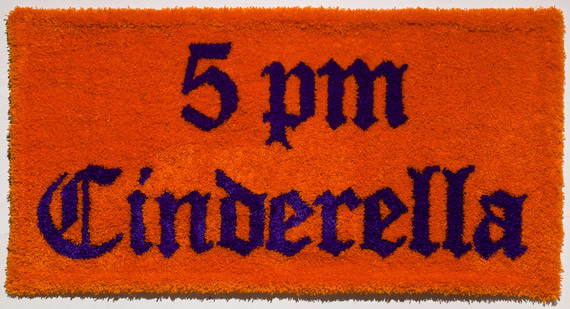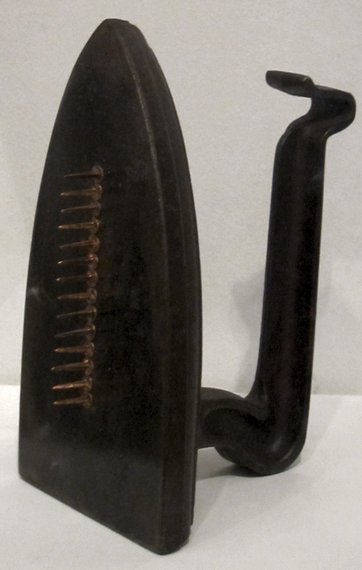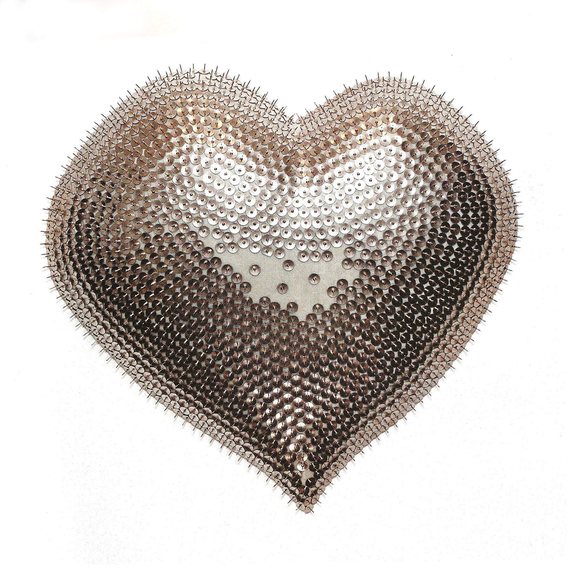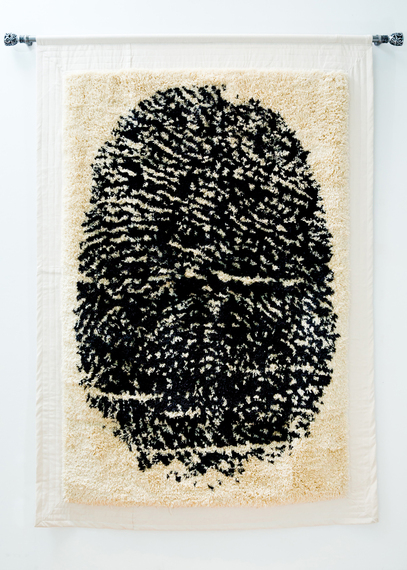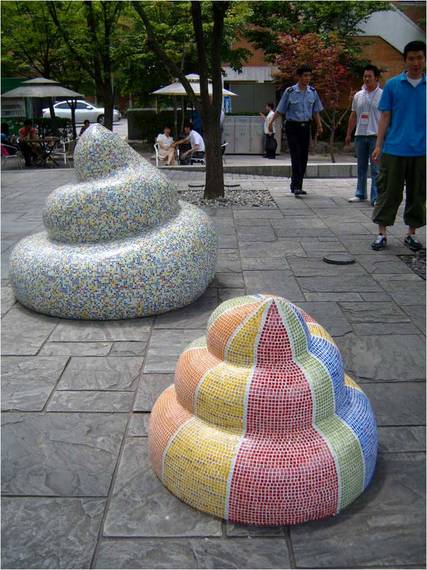
Jina Chung, The Poop Tale (2009), f.r.p., mosaic tiles, 60 x 60 x 48 inches and 36 x 36 x 24 inches, Installation Seoul City Museum
Jina Chung can best be described as an artist who champions a sort of Post Pop- Conceptual-Dada blend of thinking where one can decipher their connection to ambient everyday things to create self awareness. We judge our worth, especially in times of weakness, by how we believe we are being judged or perceived. We are linked forever to our experiences and unless we can constantly separate and analyze we are lost and consumed. Chung's art helps us move things along with humor and irony making her way of looking at life a powerful and memorable path for others to possibly map out and understand their own lives.
Recently, I had the opportunity to ask Ms Chung a few questions to further clarify her intentions.
DDL: Mom's Tale-5pm Cinderella is such a loaded image. It implies so many different interpretations, especially as a hook rug to potentially be walked across. Can you tell me about this work?
JC: I was searching for something that might induce sympathy for people who raise their children. When their kids are young, most of the moms are Cinderellas, figuratively speaking, because they have to come home at a certain time, putting aside whatever they were doing outside the home, to take care of their family. I have a son who was in elementary school when I made this piece, and he would come home around 5 pm from school.
For someone, it's 5pm, for someone else, it could be 1pm or even all day. Of course taking care of a loving family is a pleasant and worthwhile thing to do, but sometimes there are oppressing moments of responsibilities. This is the background thought I had.
The colors, texture and technique of the rug is rather impromptu - a hook rug was the easiest way to make a tapestry for me, and I enjoyed the making of it! Color-wise, I was looking for something visually strong, with a contrasting feeling. The gothic font suggests a long history of motherhood as a bit stifling, yet beautiful. I've been working on the ambivalence of things around us, and I always enjoy putting two opposites together.
DDL: Your Diary series is largely, or what I assume to be, easily understood as comprised of symbolic items that represent various aspects of daily living. Many of the items such as an oven mitt, cello, umbrella and a bag of chips are cast in bronze or aluminum while others are in their original form such as an ice-cube tray and a kitchen funnel. What is common throughout the series is the color of each object that is produced by incessantly coloring them in with lead pencil to the point of near insanity. Is this meant to imply frustration, it is a form of meditation, or is it simply a way to give everything a uniform 'patina'?
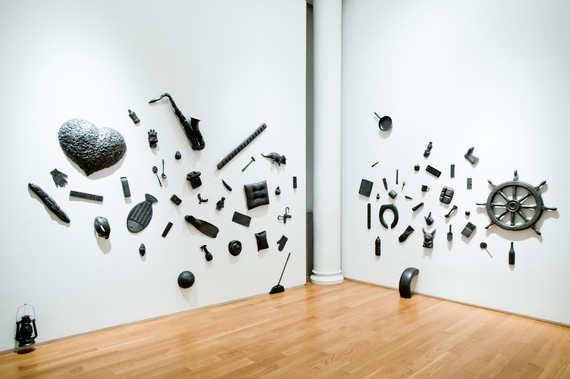
Jina Chung, Diary (2012-14), installation view, partially cast in bronze or aluminum, lead pencil, dimensions variable
JC: You already have the perfect answer about the pencil coloring as it suggests frustration, meditation, and at the same time it gives great color and atmosphere to the work. Using a lead pencil symbolizes the recording of our daily lives, small and large events, accidents, feelings and so on. A repetitive process has been recognizable on every work of mine, giving me healing, meditating moments.
DDL: I think of Man Ray when I see you using thumb tacks on the surface of your sculptures, and Damien Hirst, Chris Ofili and Niki de Saint Phalle when I see your ornamented works of The Poop Tale series. Humor in art is difficult to manage, yet you use it well enough to deliver some deeply emotional, and highly charged issues. When did you first start using humor in your work and does it ever cloud over the more important issues in your work?
JC: Man Ray, Méret Oppenheim, and Niki de Saint Phalle had a great influence on me when I was in college. From them, I learned that anything could be a material for art, yet, not everything can be used. And I'm glad you noticed the humor in my work. I could say that I've been trying to hide the seriousness of my feelings or thoughts behind the humor, pretending everything is OK since my first solo show in 1991. I wanted to be an observer rather than an activist (or vanguardist).
DDL: Do you think your hidden seriousness is cultural or an individual choice? I also have to ask about works like Hope (despair) which feature large wall mounted letters filled with flowers - is this a personal pronouncement or a societal observation?
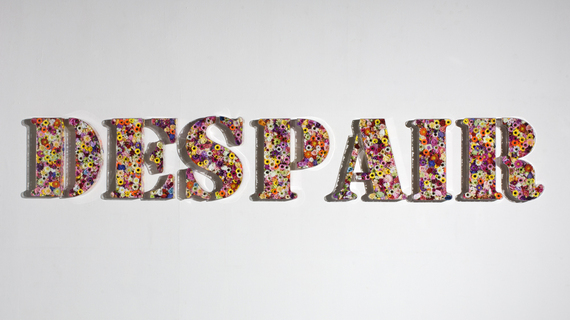
Jina Chung, Hope (despair), (2010), clear acrylic letter box and artificial flowers, 156 x 23 x 2.7 inches
JC: It is my personal choice to set humor in front of the message. Some artists use more direct visual language to express their issues but I prefer a metaphor or personification to project what I think. Most of the words or signs in my work are chosen for personal reasons, but I try to finish them in such a way that they possess universal empathy.
DDL: I like your thinking. One final question if I may. You used your fingerprint in a recent work. In this instance, we are seeing one of the ultimate forms of identity, an approach that is very different from the universal take you often aspire to. I'm thinking you are minimizing more than maximizing the content here. Your response?
JC: I always wanted to try to do something with my fingerprint. It is one of - or part of - a self portrait that no one can recognize if they are not told that it is mine. I was attracted by the idea of revealing myself explicitly and ambiguously at the same time. Besides, I like the shape of a fingerprint in general because it looks like a maze suggesting the journey of life. I made this piece as a large rug, with endless needle work with soft units of yarn to put forth a familiar subject - a fingerprint - in a different context - as art - to represent that particular perspective of the self.

